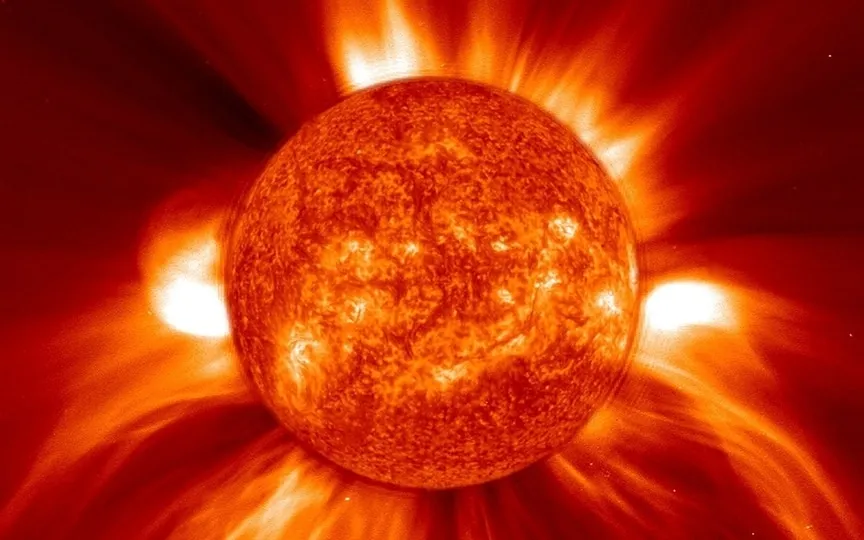NOAA Warns of Impending Solar Storms Set to Impact Earth Tomorrow
Following a fortunate escape from a coronal mass ejection (CME) earlier this week, we are now confronted with another potential solar storm threat. The National Oceanic and Atmospheric Administration (NOAA), a US agency responsible for monitoring space weather, has warned that multiple CMEs may impact the Earth between August 4 and 5. These CMEs were propelled by an M-class solar flare that erupted on the side of the Sun facing Earth on August 1. This occurrence was part of a significant instability event involving the active sunspot AR3380. As the CMEs draw nearer, concerns arise regarding the possibility of an intense solar storm that could cause damage to satellites, disrupt shortwave radio communication, and more. For further information, please refer to the provided details.
According to a SpaceWeather.com report, “Small G1-class geomagnetic storms are possible August 4-5, when one or more weak CMEs are expected to hit Earth’s magnetic field. They were hurled in our direction in a series of M-class flares from active sunspot AR3380 on the 1st and 2nd .August.
A solar storm is expected to hit tomorrow
Currently, there are up to 9 active sunspot regions on the Earth-facing side of the Sun. This means that there is a high possibility that new solar explosions can occur at any time. If these flares are large enough, they can release large amounts of plasma and solar material into space, eventually forming a CME.
Compared to some of the stronger solar storm events we’ve seen in previous months, this one isn’t expected to be too intense. But even small storms can cause serious damage. It can interfere with wireless communications and GPS services, causing problems for airlines, mariners, radio controllers and drone operators. A solar storm can delay flights, cause ships to change course, and disrupt any important information that is shared over these low-frequency channels.
However, things could take a turn for the worse if the next published CME is intense and gives way to a strong G5 class geomagnetic storm like the Carrington event. Such storms can have ominous effects on Earth.
NASA Tech Predicting Solar Storms
The NASA Solar Dynamics Observatory (SDO) houses a full suite of instruments for observing the Sun, and has done so since 2010. It uses three very important instruments to collect data on various solar activities. They include the Helioseismic and Magnetic Imager (HMI), which measures high-resolution longitudinal and vector magnetic fields across the entire visible solar disk, the Extreme Ultraviolet Variability Experiment (EVE), which measures the sun’s extreme ultraviolet radiation, and the Atmospheric Imaging Assembly. AIA), which provides continuous full-disk observations of the solar chromosphere and corona in seven extreme ultraviolet (EUV) channels.




